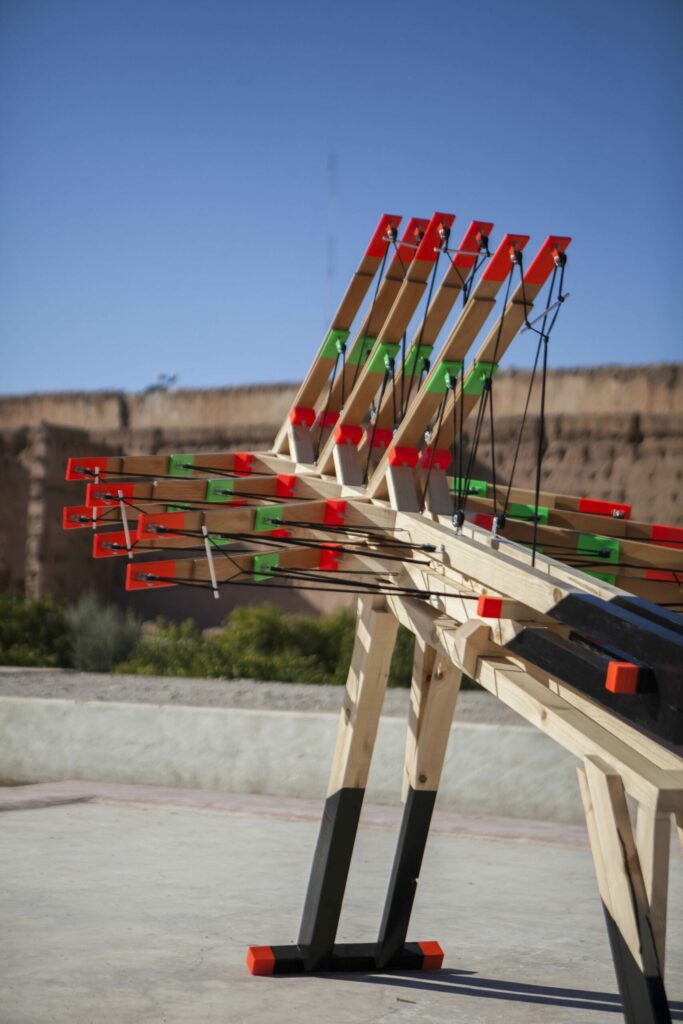Morocco
24 Feb 2016 - 08 May 2016

Max Boufathal, Madonna 207, Courtesy Marrakech Biennale
This years’ title ‘Not New Now’ focuses on artistic projects, research, and ideas that respond to sociopolitical urgencies, representative of « living art »—an art that is in service of people and society. According to Fadda: « If the New, as a cultural and material trope, is bound to the future and history is anchored to the past, how and when are we left to emphasize the Now? The surmounting political urgencies, the tremors of earth—the growing wasteland, the vestiges of materials, human remains, and boats in shores and art alike—the calls for responsibility and ecology could all be heard beckoning for this shift of time focus. This is the time for a heightened civic awareness that requires action and responsiveness. »
Contributors to the Marrakech Biennale include curator Omar Berrada, who will present a specific show within the larger exhibition on the body of work and the archive of the late Moroccan critic and filmmaker Ahmed Bouanani; artists Yto Barrada and Mona Hatoum; a small survey of the art movement initiated by the Casablanca School; and architect Khaled Malas with documentation of his ongoing collaboration with a collective of artists and craftsmen in Ghouta and other areas of Syria to build windmills out of found materials to generate electrical power for hospitals.
The main exhibition of the 6 th Marrakech Biennale questions concepts of newness, originality, and advancement with a regional locus that extends from Africa to Asia. Fadda adds: « Marrakech is Africa and the Arab world, throbbing all at once. The city lends itself as a site, bare of white walls, to look at art from within the larger continent. Through the biennale, we will examine how art is used formally as a means for cultural resistance and how ideas ranging from abstraction and minimalism to recycling, junk art, and creative survival technologies are becoming pervasive from past present experiences that occurred there. Not New Now looks at the legacies of decolonization— in addition to its failures—as one of the origins that inspired contemporary art to embrace incendiarism, criticality, and radicalism. The biennale’s premise also builds on the intangible, longstanding history of Pan Afro-Arab & Afro-Asian unity, through critically investigating socio-political projects, cultural partnerships, intellectual provocations, and art movements that have led to many shared artistic tendencies. »
Marking the opening of the exhibition on February 24-28, the biennale will organize a series of live performances and a conference with internationally recognized speakers to discuss cultural, political, and social issues central to Not New Now, mainly looking at the idea of Pan-Africanism and Afro-Asian solidarity. Throughout the duration of the biennale, a range of educational activities will serve to establish the event within the local community. Performances, exhibitions of archives, film programs, seminars, lectures, public discussions, and online projects will provide for an art structure that looks at cultural commonalities and engages with a wide variety of audiences.
The aim of the 2016 Marrakech Biennale is to present an innovative approach to public spaces in relationship to contemporary art and culture. Major urban world heritage sites in the medina of Marrakech such as Palais El Badi and Palais Bahia, will host a large selection of works, ranging from installations to site-specific commissions by a group of nearly fifty international artists from Africa, the Arab world, and its diasporas. To complement the wide scope of the biennale, a series of Partner and Parallel Projects will be on view simultaneously across various parts of the city of Marrakech.